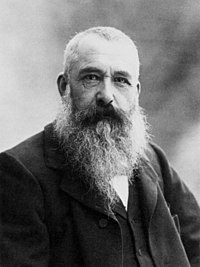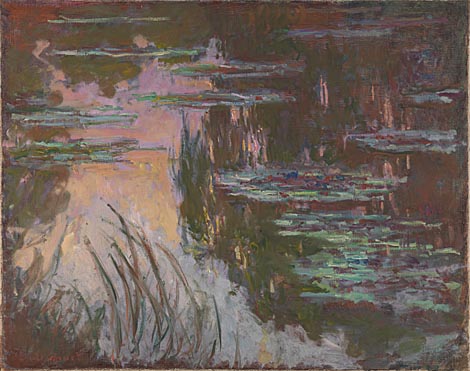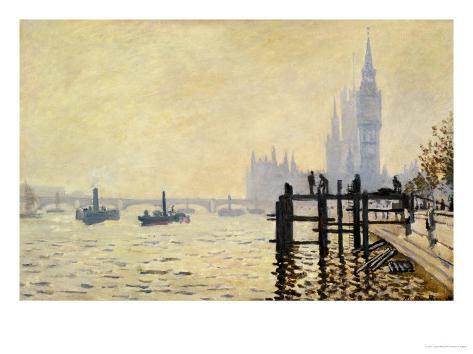Claude Oscar Monet , the leader and
most prominent figure in movement whose name come from Monet's "
impression sunrise. He was born on November 14, 1840 in Paris, France. Claude
Monet left around 500 sketches, more than 2000 paintings and 2,700 letters to
the world. His Footprints from Paris Street to the Eastern Mediterranean coast,
from France to London, Venice, Norway, traveling and painting, left numerous
works to the coming generations.Most famous pantings by Claude Monet include
The impression • Sunrise, The Notre Dame series of Rouen, the water lilies
series, the poppies near PRees devtheuil.


Monet and
several other artists experimented with a method of putting paint on the canvas
without blending the colors. He would get the paint directly from the tube
without mixing it on his palette first. Brush strokes and dabs of color would
be placed side by side. Monet called it the "division of colours".
When you stepped back from the canvas, your eyes would blend the colors
together. This was not the traditional method of painting, and many people
rejected their works.
Water-Lilies,
Setting Sun


Of all Monet's
series, the one depicting his water-lily pond in his garden at Giverny in
Normandy occupied him for longest and produced the largest number of canvases.
In this work, the pink and yellow rays of the setting sun are reflected in the
still water, along with the overhanging branches of a weeping willow. Lily pads
drift across the water's surface. Monet still had this painting in his studio
in 1923 when he sold it to a dealer with a number of other works. About to
undergo a cataract operation, he asked to keep this particular work for a while
longer, perhaps in order to look at it, or even work at it with renewed vision.
The Thames below
Westminster


This is one of
the works produced by Monet when, like Pissarro and Daubigny, he moved to
London during the Franco-Prussian War (1870-1). Pissarro worked mainly in south
London, while Monet painted the parks of central London and the River Thames.
Here he shows the misty atmosphere of the capital on a spring day, with the
Houses of Parliament and Westminster Bridge in the background. They are
contrasted with the jetty in the foreground casting broken shadows on the
river, and the new foliage of the trees on the Embankment to the right.
Daubigny's 1873 painting, 'St Paul's from the Surrey Side', conveys a similar
impression of the Thames, but puts more emphasis on the industrial nature of
the river.
The Water-Lily
Pond


In 1883 Monet
moved from the north-west of Paris to Giverny where he lived until his death.
Adjacent to his property was a small pond which he acquired in 1893, where he
created a water garden with an arched bridge in the Japanese style. In 1900 he
exhibited a series of ten canvases of the pond, showing a single subject in
differing light conditions. He worked on similar series representing poplars,
haystacks and the façade of Rouen Cathedral during the same period. The simple
design of this painting with the close-up view of the bridge was repeated in
several other canvases. The fresh greens of the foliage evoke an early summer's
days.
LINKS:
No comments:
Post a Comment